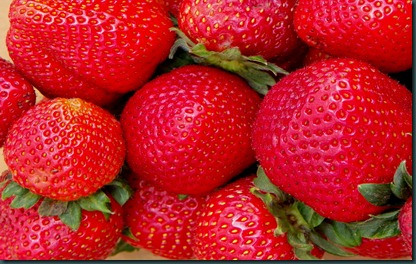 This weekend’s day trip on Saturday was to Marion Station, MD for the “Inaugural Somerset Strawberry Festival” which featured: strawberry jams and jellies contest, Little Miss & Mr. Strawberry Pageant, non-motorized Festival parade , country music performance, crafts vendors and festival food – fries, BBQ chicken, homemade ice cream and funnel cake.
This weekend’s day trip on Saturday was to Marion Station, MD for the “Inaugural Somerset Strawberry Festival” which featured: strawberry jams and jellies contest, Little Miss & Mr. Strawberry Pageant, non-motorized Festival parade , country music performance, crafts vendors and festival food – fries, BBQ chicken, homemade ice cream and funnel cake.
Marion Station (Marion for short) is in Somerset County, MD – about an hour drive from the F&P. In the early 1900s, Marion was labelled the Strawberry Capital and regarded as the largest shipper of strawberries in the world.
Any guesses as to what this guy does for his work?
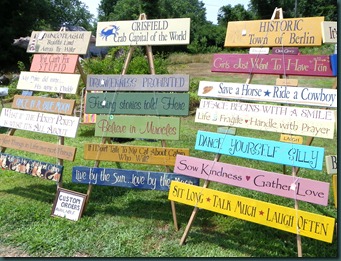
Strawberry trash can art . . .
From the 1900s through the early 1920s, buyers converged on Marion 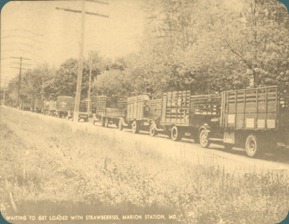 to buy berries shipped in ice-refrigerated RR cars at the rate of several hundred cars daily in peak season. Trucks and wagons lined up to go through the “largest strawberry auction block” (see vintage photo). Marion (formerly Coulbourne Creek) was named for the daughter of John Horsey who paid for the right-of-way for the RR and station. In its prime, Marion was a bustling town with a hospital (first in Somerset County),two doctors, two restaurants, three schools, canning factory, candy factory, community hall, bicycle shop, movie theater, several blacksmiths, two barber shops, post office, railroad station, and two banks.
to buy berries shipped in ice-refrigerated RR cars at the rate of several hundred cars daily in peak season. Trucks and wagons lined up to go through the “largest strawberry auction block” (see vintage photo). Marion (formerly Coulbourne Creek) was named for the daughter of John Horsey who paid for the right-of-way for the RR and station. In its prime, Marion was a bustling town with a hospital (first in Somerset County),two doctors, two restaurants, three schools, canning factory, candy factory, community hall, bicycle shop, movie theater, several blacksmiths, two barber shops, post office, railroad station, and two banks.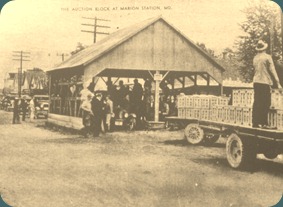 Strawberry farming poured money to buyers and farmers. Many farmers depended on this one crop for their cash income and lived through the winter on credit to be paid at the end of the next season. Land prices rose due to the demand for growing fields. Marsh areas were used; forests and pasture lands were converted to strawberry fields. Farm equipment was purchased on credit to increase production. The sales height was during WW I when berries sold at the auction block for up to 30 cents/quart. Aside from this boom, farmers never made more than a normal living; the more berries they produced was more income for brokers and buyers.
Strawberry farming poured money to buyers and farmers. Many farmers depended on this one crop for their cash income and lived through the winter on credit to be paid at the end of the next season. Land prices rose due to the demand for growing fields. Marsh areas were used; forests and pasture lands were converted to strawberry fields. Farm equipment was purchased on credit to increase production. The sales height was during WW I when berries sold at the auction block for up to 30 cents/quart. Aside from this boom, farmers never made more than a normal living; the more berries they produced was more income for brokers and buyers.
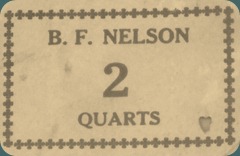 Here’s how it worked: Local Marion businesses owned the auction block and restricted the buyers to locals who could financially guarantee payment to farmers. Out-of-area buyers would buy through local brokers on a 5-10 cents per crate commission. Local brokers owned or controlled the local household, fertilizer, farming equipment, and crate supplies which were sold on credit at top prices with up to 6 per cent interest added to the total annual bill. Brokers profited – assured an income from brokerage, from profits on sales to farmers, plus income from interest rates on credit. It was easy to collect payment from the farmers – the brokers bought berries their berries and deducted for the credit before final payment.
Here’s how it worked: Local Marion businesses owned the auction block and restricted the buyers to locals who could financially guarantee payment to farmers. Out-of-area buyers would buy through local brokers on a 5-10 cents per crate commission. Local brokers owned or controlled the local household, fertilizer, farming equipment, and crate supplies which were sold on credit at top prices with up to 6 per cent interest added to the total annual bill. Brokers profited – assured an income from brokerage, from profits on sales to farmers, plus income from interest rates on credit. It was easy to collect payment from the farmers – the brokers bought berries their berries and deducted for the credit before final payment.
The down-trend started in the 1920s when increased acreage, improper crop rotation, plant disease, blight, and insects doomed berry production. Growing one crop continuously over an area (monoculture) exploited the soil; berries became costly to produce. The 1929 depression ended an industry near collapse – farmers went bankrupt; farms were auctioned for unpaid taxes or lost because of unpaid interest on mortgages. As strawberry production dwindled, the auction block was discontinued. Marion’s “Strawberry Capital” title became memory. Empty farmhouses, reminders of prosperous times, are now “tombstones.”
Today, Marion Station has another distinction – its been named an official “ghost town” – the only one on the Eastern Shore by an internet site that monitors ghost towns in America.
It’s been noted that the current annual rate of berry marketing in the U.S.does not equal one day’s marketing at Marion Station over 100 years ago. How times have changed.

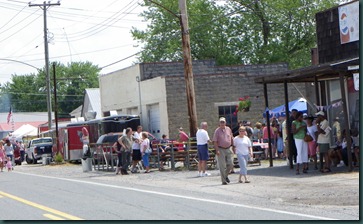

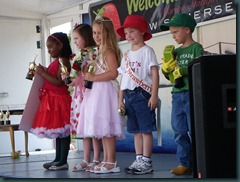

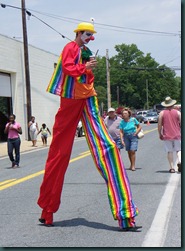

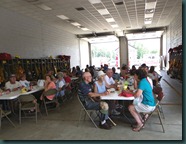

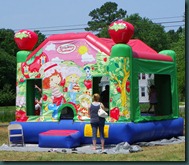

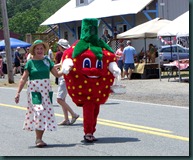
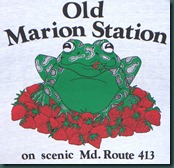
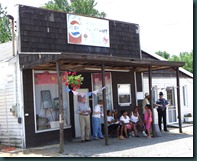
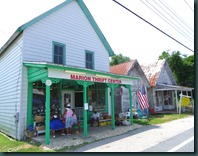

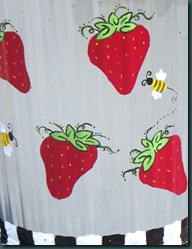

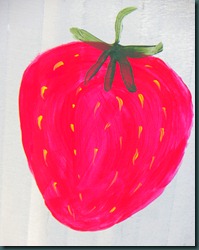

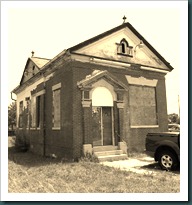
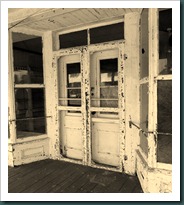

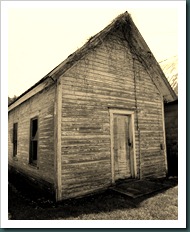

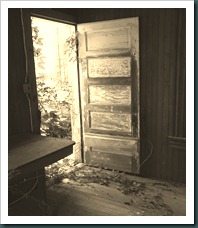
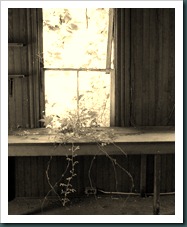
12 comments:
Oh, nuts, I hate to miss something that looks like as much fun as this. The berries look wonderful.
Hi Jim,Yes, the berries were wonderful, but they were not grown here...CA! Are you and E back on the eastern shore - I enjoyed all the posts from TX!
I feel a bit sad for Marion, but we did enjoy our first big basket of local strawberries on the weekend.
I wonder if Marion had a librarian.
AC, we have some fresh strawberries growing in our little patch here, but have been enjoying store-bought ones as well as our yield is currently very low.
Since a library was not among the buildings in Marion, sadly there was no librarian named Marian, but then there probably wasn't a salesman named Harold Hill either.
Hey Jim, I now KNOW you and E. are still having fun (and sun, like here) in the Austin area. I checked your blog, after replying to your post here.
That first picture is incredible. Yum! I just love the history you included with the pictures of the current celebration. What fun! Thanks for sharing. :)
What lovely history and pictures too. Thanks for allowing us to share with you.
Thanks for the comments, Shelley. I am learning a lot by posting these blogs and it's nice to hear back that others enjoy reading them. Please drop in anytime as we like visitors.
I just love posts like this! It's wonderful to look into the story behind a town. And now I want strawberries, which are out of season here. Damn!
Welcome Pauline and thanks for the dop-in and comment. I learn so much by researching on the web and this little town was really interesting and thriving in its heyday. Sadly, now there are no more strawberry growers shipping from Marion Station. But it was great to see local folks celebrating its heritage. Please come back again cause there will be future posts like this.
Some really great posts and great pics of the Strawberry Festival. I see all the buildings and shops in the photos but was a bit disappointed that there is not a clear shot of my shop. The second strawberry festival this year was bigger and better with LOCAL strawberries. Next year's festival promises to be even better. Don't forget the 2012 Strawberry festival coming next May. Thanks again!
Thanks Lou Ann for the belated visit and comments. We missed the 2011 festival, but maybe in 20112 we'll get there again.
Post a Comment